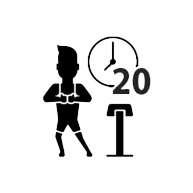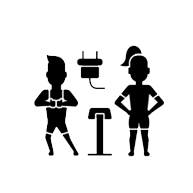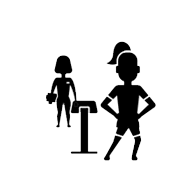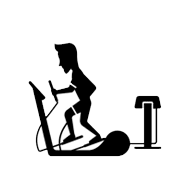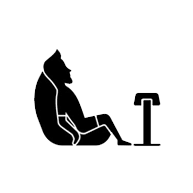EMS-training? What happens during the training?
EMS? You know what that means? Superfast and very intensive - fast training - train with electric impulses
In order to move or get activated, a muscle needs certain stimuli. These stimuli are transferred to the relevant muscle by the central nervous system, controlled by the spinal chord and nerve fibres.
In principle, these stimuli controlled by our own body are nothing else than electric impulses / tensions, just like during EMS – so to say natural electric shocks in our body. EMS is based on exactly that principle: during an exercise in an EMS studio, which forces the muscles to contract, additional, external stimuli are applied through electrodes. So would it not be sufficient to just exercise without EMS? Yes! But due to the used frequencies, the EMS-training increases the stimulation at the muscle and optimises the muscle contraction, so that the muscle fibres are utilised even more.
Differentiation of muscle fibres in the body
The body has two types of muscles. Firstly, muscle fibres of type 1, the so-calles “slow-twitch-fibres”, and secondly, muscle fibres of type 2 or “fast-twitch-fibres”. Therefore, we describe the S-fibres as dark, slowly contracting muscle fibres, and the F-fibres as light, fast contracting muscle fibres. There are also differences between the two types of fibres with regard to contraction: the slow moving S-fibres begin to twitch fast at around 15 to 20 Hz, while the F-fibres, thus the fast-twitch-fibres, reach their action potential between 60 and 100 Hz.
The machine producers use a heart rate of up to 95 during the EMS-training. If you think that you reach the F-fibres during normal bicycling, you are wrong. Even during cyclical movements with a high repetition rate, such as bicycling with a high pedal frequency, only muscles of type 1 are being used in the long run. Nevertheless, in everyday life and during weight training, fibres of type 1 are being used. In plain language, this means that EMS-training may enhance the utilisation of muscle type 2, but it does not have to!
Muscular imbalances during EMS-training
The EMS system does have a second advantage with regard to muscle contraction in comparison with conventional training, because of so called “imbalances” of opposing muscle groups, which effect the whole body. However, during EMS these imbalances are being counterbalanced through electric impulses. Due to the selectable electrodes at the neck, feet, legs, bottom, stomach, chest, and back, it is possible to obtain a perceptible control of the musculature up to 30%.
Positive side-effect: I am training my whole body
In a conventional gym, I need to focus on certain muscular groups during my training – this is not the case with EMS! I am able to train both, agonist and antagonist, which means: biceps and triceps simultaneously! EMS proves to be as effective, because it is possible to train muscle groups effectively and at the same time!
